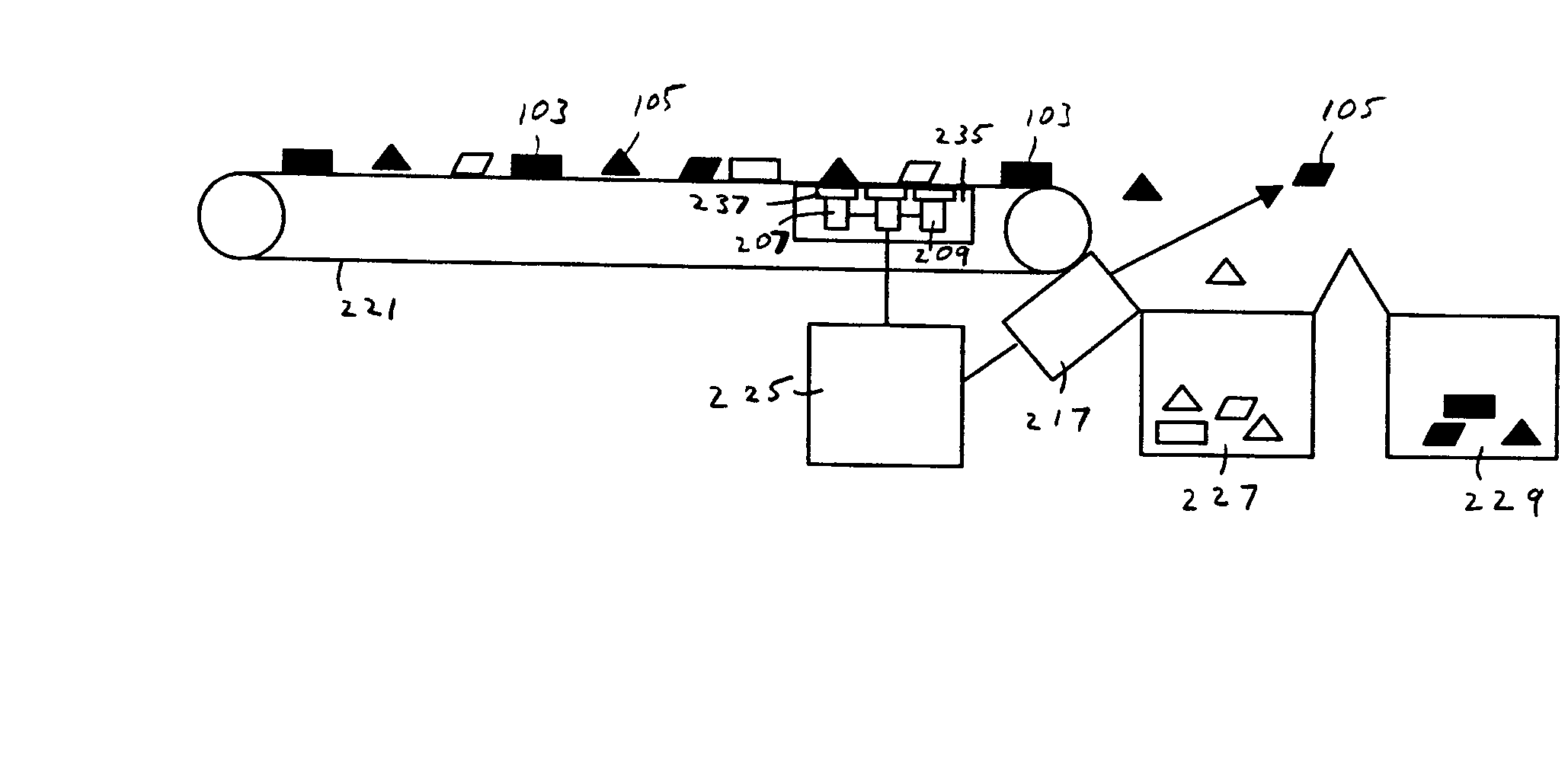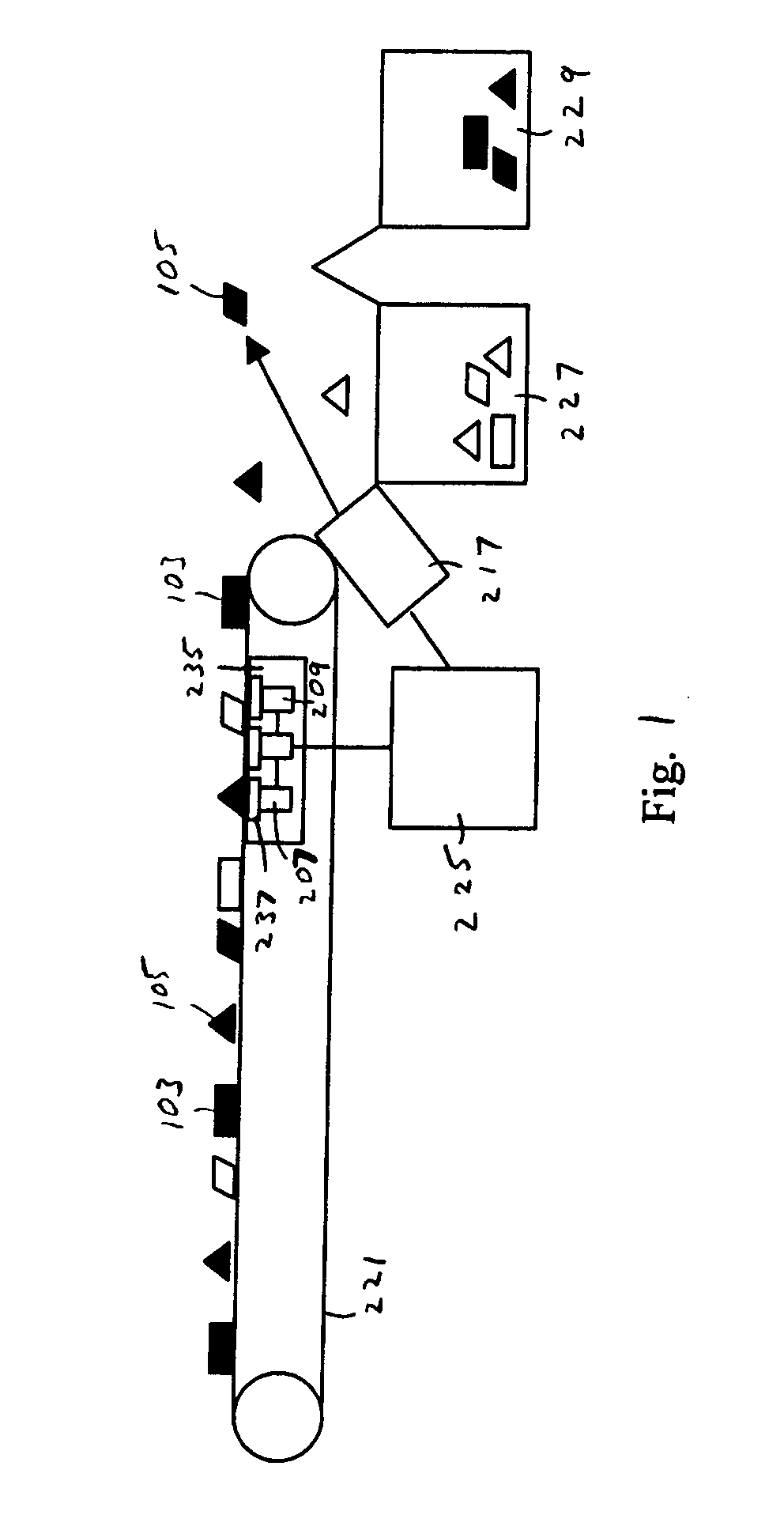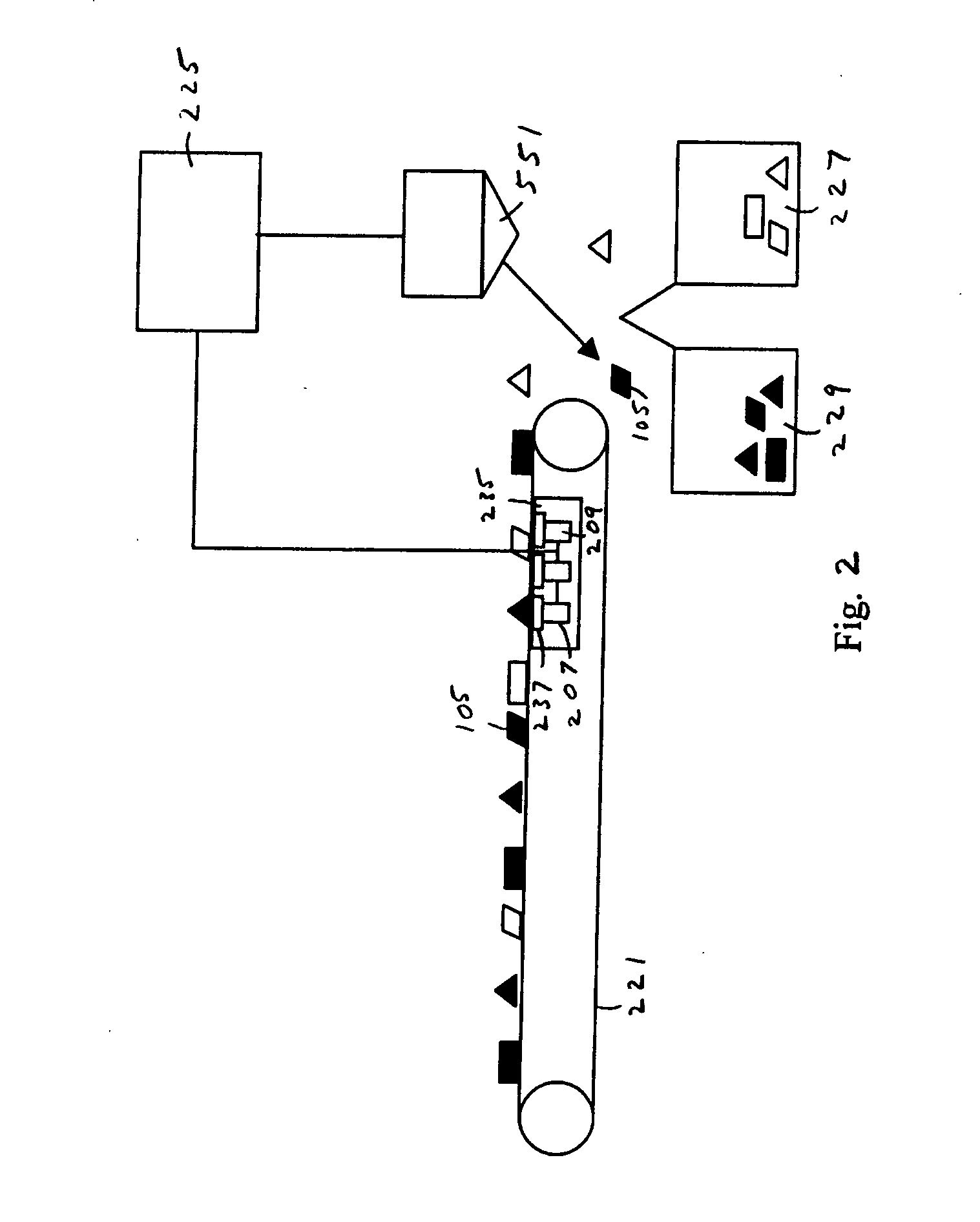Method and apparatus for sorting fine nonferrous metals and insulated wire pieces
a technology of insulated wire and nonferrous metals, which is applied in the direction of magnetic property measurement, material magnetic variables, instruments, etc., can solve the problems that insulated wire and other nonferrous scraps less than 40 mm in size cannot be recovered, and the fine pieces of stainless steel, aluminum/copper radiators, etc., to achieve the effect of high correction factor materials and more efficient recycling
- Summary
- Abstract
- Description
- Claims
- Application Information
AI Technical Summary
Benefits of technology
Problems solved by technology
Method used
Image
Examples
Embodiment Construction
[0018] Although the present invention is primarily directed towards a sorting system that utilizes inductive proximity sensors to identify and separate target metal pieces, there are other system components that are useful in optimizing the system performance. The mixed materials used by the inventive system are ideally small or fine pieces. These can come from various sources. In an embodiment, the mixed materials are emitted from a shredder and sorted by size with a trommel or another type of screening device that separates small pieces from larger pieces. In the preferred embodiment, pieces that are smaller than 40 mm (millimeters) are separated from pieces that are larger than 40 mm.
[0019] These fine pieces are further processed to separate the ferrous and conductive nonferrous materials. The mixed fine pieces can be passed over a magnetic separator that removes the magnetic ferrous materials. The fine nonferrous materials are then passed over an eddy current separator to remov...
PUM
 Login to View More
Login to View More Abstract
Description
Claims
Application Information
 Login to View More
Login to View More - R&D
- Intellectual Property
- Life Sciences
- Materials
- Tech Scout
- Unparalleled Data Quality
- Higher Quality Content
- 60% Fewer Hallucinations
Browse by: Latest US Patents, China's latest patents, Technical Efficacy Thesaurus, Application Domain, Technology Topic, Popular Technical Reports.
© 2025 PatSnap. All rights reserved.Legal|Privacy policy|Modern Slavery Act Transparency Statement|Sitemap|About US| Contact US: help@patsnap.com



